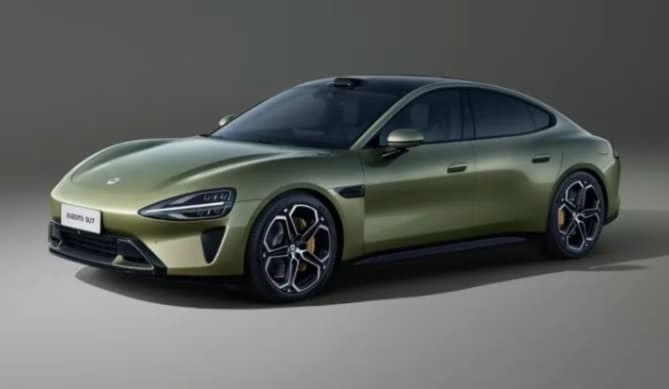How much will the Xiaomi SU7 cost? When Lei Jun announced at the press conference that the price of Xiaomi SU7 Ultra has been settled, the man who was once called “price butcher” by Mi fans is now holding a sharp knife to stab the high-end market. The price tag of 529,900 yuan is like a mirror, reflecting the rapid development of China’s new energy vehicle market and the collective anxiety of the entire industry.
Disassembling the configuration parameter table of SU7 Ultra, you will find an intriguing phenomenon: laser radar, air suspension, dual-motor four-wheel drive… These configurations that originally belonged to the luxury car camp have been compressed into a price range of more than 200,000 yuan in the Xiaomi system. When the price doubles to 500,000 yuan, the newly added selling points such as intelligent driving system and top-level audio may form a significant advantage in industry parameters. This “stacked upgrade” also exposes the core technical bottlenecks that are common among new forces-when the hardware configuration is homogenized, the acquisition of premium capabilities is falling into a vicious circle. Of course, compared with the 962,000 yuan price of Porsche Taycan Turbo S, the brand premium and technological accumulation of SU7 Ultra have begun to challenge the global luxury performance cars to some extent! Its significance may be the same as Chery’s QQ to the micro car market and Sail to the family car market. Therefore, the launch of SU7 Ultra is a boon to players in the Chinese high-end performance car market, but it is difficult to enter ordinary families.
Under the hot topic of “How to view the pricing of Xiaomi SU7 Ultra” on Zhihu, a comment by an automotive engineer received high praise: “When consumers vote with their feet for the refrigerator and color TV of Ideal L9, but turn around to pay for the air suspension of SU7 Ultra, this market is still sick.” Data shows that in the domestic luxury car market in 2023, the penetration rate of new energy in models above 300,000 yuan is only 27.6%, far lower than the 35% of the overall market. This reveals the cognitive gap between the consumer market and high-end new energy products-they are willing to pay a premium for intelligence, but remain vigilant about real technological breakthroughs. After the launch of Xiaomi’s first car SU7, the data of “more than 50,000 pre-orders on the first day” seemed to prove its success. But a closer look reveals that a considerable proportion of these orders come from the conversion of users in the original Xiaomi ecological chain. This “internal circulation” growth model just proves the reality that new power brands have not yet broken through the walls of the high-end market. While the subscription service of NIO ET7 and the XNGP full-scene assisted driving of Xiaopeng G9 are still struggling to break through, the pricing of SU7 Ultra is more like overdrawing brand credit. Whether it can continue to be popular in the Xiaomi ecological chain may take time to prove!
From Lei Jun’s announcement of “betting 100 billion R&D funds in the next five years” to the news that SU7 Ultra raised more than 50 billion yuan before its listing, behind this gamble is the deep involvement of capital forces in the automotive industry. Industry insiders revealed that for every SU7 Ultra sold by Xiaomi Auto, its gross profit margin needs to reach an astonishing 35% to cover the R&D costs. This financial model runs counter to Tesla’s survival rule of “scale cost reduction” and is more like the capital market’s eager desire for short-term returns. While the industry is still arguing about the landing time of L3 autonomous driving, SU7 Ultra has upgraded the number of laser radars from single to dual. This seemingly radical technical route is actually an “arms race” driven by capital. An executive of a new power car company privately complained: “Our R&D team now spends half of its time reporting the technical route to investors, and the other half is modifying the data model in the PPT.” This impetuous atmosphere is distorting the innovation rhythm of China’s new energy vehicle industry.
How much will the Xiaomi SU7 cost? Standing at the price threshold of 529,900 yuan, SU7 Ultra is neither a milestone of success nor a verdict of failure. It is more like a prism, reflecting the deep-seated challenges faced by China’s new energy industry in multiple dimensions such as technological breakthroughs, market education, and capital games!
















Leave a Reply